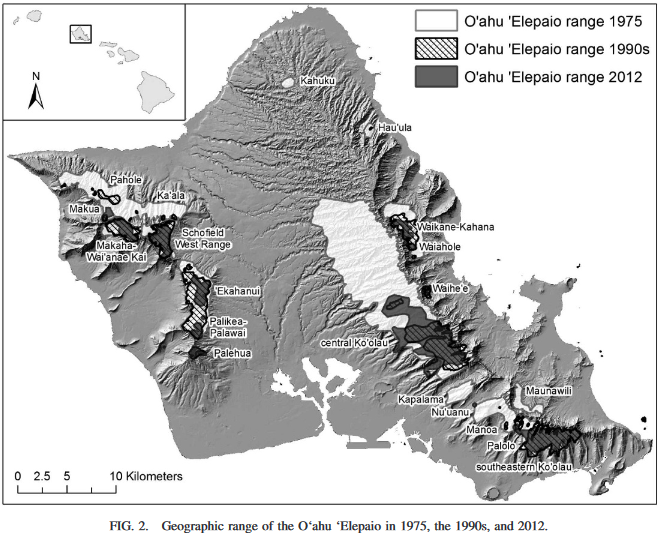Birdfinding.info ⇒ Oahu’s rarest surviving endemic songbird is endangered and declining, but can still be found at a few accessible sites in the hills above Honolulu, including Aiea Ridge, Wiliwilinui Ridge, Wailupe Valley, and Kuli’ou’ou Valley. Smaller numbers remain in western Oahu, mostly on restricted properties, though it might still be found along the trail up Mount Ka’ala.
Oahu Elepaio
Monarcha ibidis
Endemic to Oahu, where it occurs in foothill and montane rain forests of the Wai’anae Range and the central and southern Ko’olau Range.
Formerly occurred in forests throughout Oahu, but now extirpated from the northern portion of the island, and increasingly localized in the western and southeastern hills, as its distribution has continued to contract since the mid-1900s. The main cause of its decline and ongoing threat to its existence is understood to be nest predation by rats.
As of 2012, its remaining populations were fragmented in four areas: (1) upper elevations of the Wai’anae Range from Pahole to Palehua; (2) the central eastern (windward) slope of the Ko’olau Range from Kahana Valley to Waihe’e Valley; (3) the central western slope of the Ko’olau Range from Waimano Valley to Moanalua Valley; (4) the southern slope of the southeastern Ko’olau Range from Palolo Valley to Kuli’ou’ou Valley.
At that time, the total population was estimated at 1,261. About a quarter (roughly 300) were in the Wai’anae Range, but these were somewhat fragmented into subpopulations that varied in their apparent viability—and this was also the area of greatest decline since the previous population estimate. Of the 960 or so that remained in the Ko’olau Range, about two-thirds were in the central-western Ko’olau and about a third in the southeastern Ko’olau, with only about 35 individuals remaining on the windward side.
Identification
A perky little flycatcher with a long tail that it habitually cocks. Adult plumage is mostly brown above and whitish below, but surprisingly variable in its details.
The brown body coloration varies from warm and rusty to cold and pale. The wings are dark-brown with two or three white wingbars.
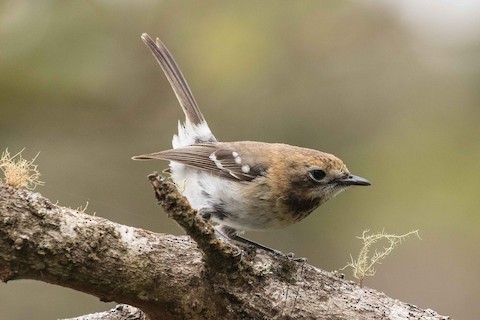
Oahu Elepaio, in its familiar tail-cocked posture. (Palikea, Oahu, Hawaii; April 16, 2019.) © Eric VanderWerf
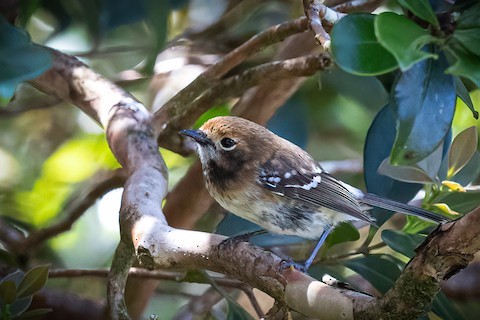
Oahu Elepaio. (Aiea Ridge, Oahu, Hawaii; April 13, 2021.) © Isaac Sanchez
The tail is dark-brown on the upperside, usually with a noticeable white rump, white tips, and white outer edges when spread. The undertail is dark-brown at the base and white toward the end.
The throat is white in the center with varying amounts of blackish on the chin, cheeks, and bib.
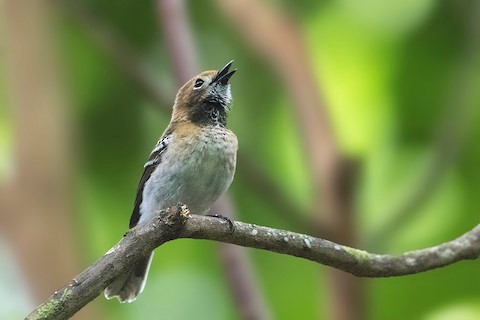
Oahu Elepaio, showing its white and black throat. (Kuli’ou’ou Valley Trail, Oahu, Hawaii; September 10, 2018.) © Bradley Hacker
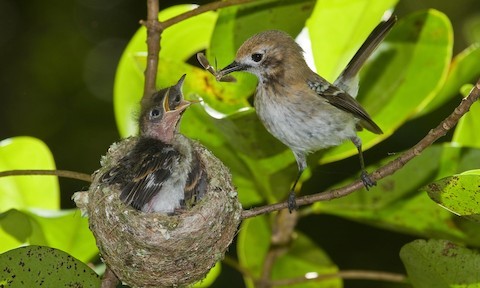
Oahu Elepaio, plainly colored adult feeding nestlings. (Palehua, Oahu, Hawaii; March 10, 2009.) © Eric VanderWerf
Immature plumages are mostly rusty-brown. As they mature their plumage shifts toward adult coloration in stages, so intermediate individuals look like rusty adults.

Oahu Elepaio, a rusty immature showing traces of adult plumage. (Wiliwilinui Ridge Trail, Oahu, Hawaii; September 5, 2014.) © Eric VanderWerf

Oahu Elepaio, juvenile showing exceptionally rusty plumage. (Aiea Ridge, Oahu, Hawaii; July 7, 2018.) © Sharif Uddin
Notes
Monotypic species. Traditionally considered conspecific with the Kauai Elepaio (sclateri) and Hawaii Elepaio (sandwichensis), known collectively as the Elepaio (Chasiempis sandwichensis), but formally recognized as a separate species in 2010.
IUCN Red List Status: Endangered.
More Images of Oahu Elepaio
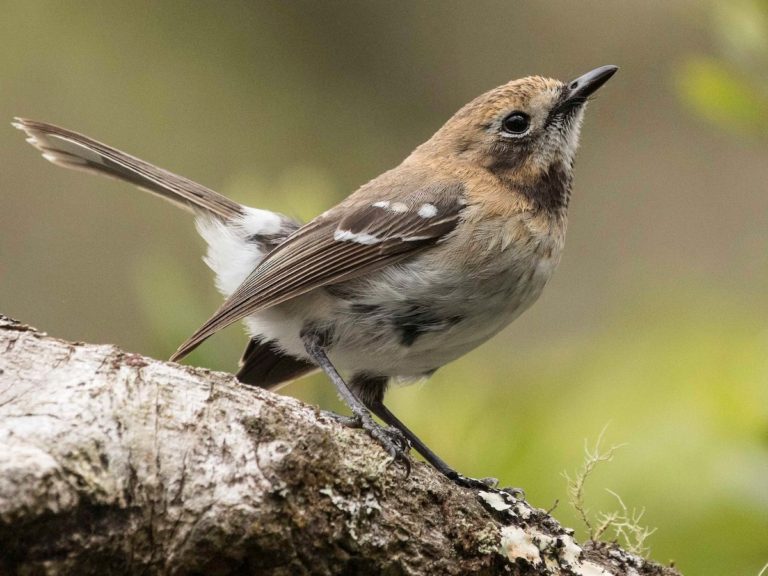
Oahu Elepaio. (Palikea, Oahu, Hawaii; April 16, 2019.) © Eric VanderWerf
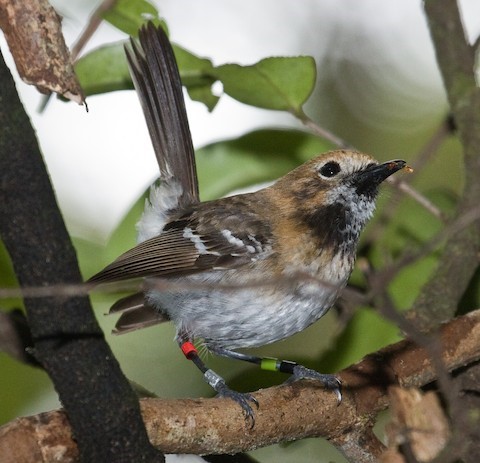
Oahu Elepaio, leg-banded, with tail fully cocked. (Wailupe Valley, Oahu, Hawaii; March 7, 2009.) © Eric VanderWerf
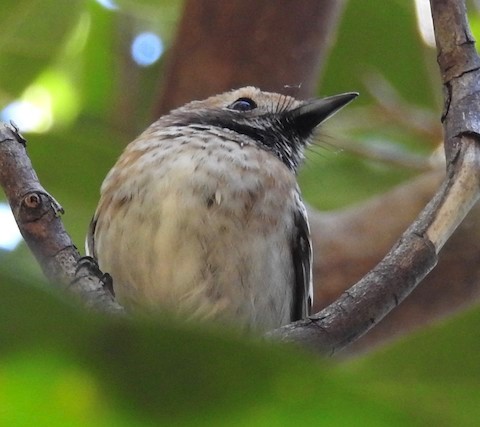
Oahu Elepaio, close-up showing bristles beside the bill. (Wiliwilinui Ridge Trail, Oahu, Hawaii; February 24, 2019.) © Sharon Forsyth
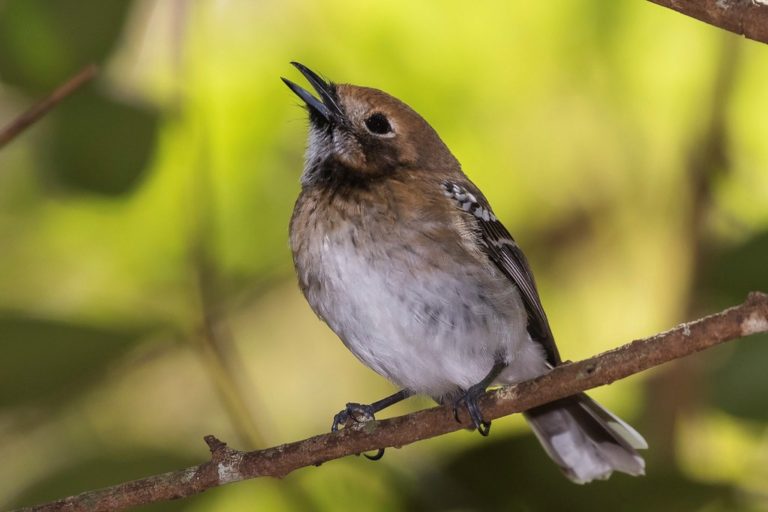
Oahu Elepaio. (Wiliwilinui Ridge, Oahu, Hawaii; September 17, 2017.) © Sharif Uddin

Oahu Elepaio. (Wailupe Valley, Oahu, Hawaii; October 27, 2019.) © Christian Hagenlocher
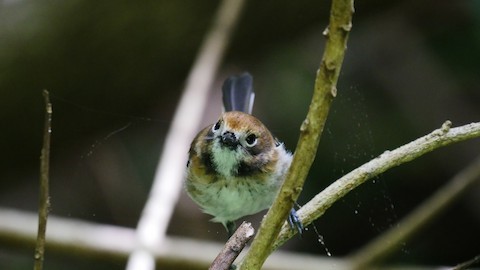
Oahu Elepaio, showing complex facial pattern. (Wailupe Valley, Oahu, Hawaii; August 25, 2019.) © Nick Kalodimos
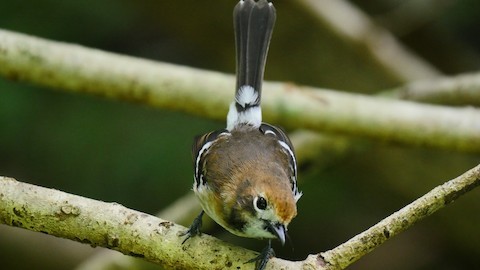
Oahu Elepaio, dorsal view showing white rump and rusty highlights on the head. (Wailupe Valley, Oahu, Hawaii; August 25, 2019.) © Nick Kalodimos

Oahu Elepaio, in sharp focus behind blurred branches. (Wailupe Valley, Oahu, Hawaii; December 28, 2019.) © Keith Dickey

Oahu Elepaio, a rusty adult with bright-white underparts. (Wailupe Valley, Oahu, Hawaii; August 25, 2019.) © Nick Kalodimos

Oahu Elepaio, a rusty adult. (Wailupe Valley, Oahu, Hawaii; February 1, 2020.) © Nick Kalodimos
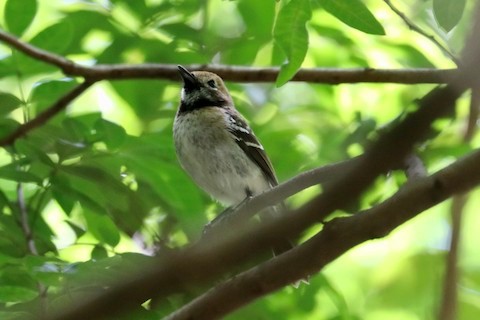
Oahu Elepaio, showing a crisp black bib. (Wailupe Valley, Oahu, Hawaii; January 27, 2020.) © Irvin Pitts
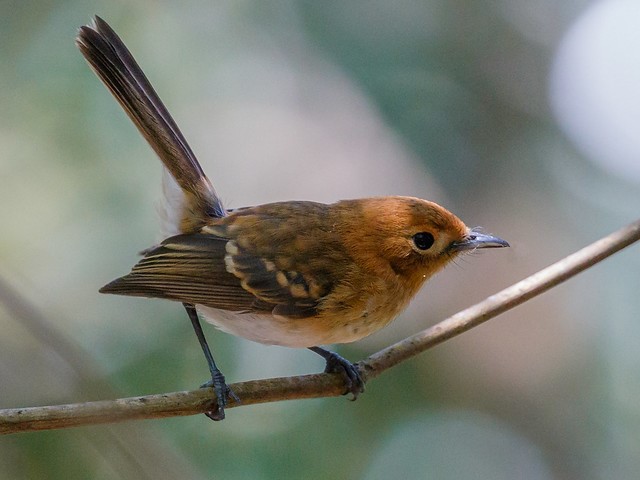
Oahu Elepaio, immature showing typically rusty plumage. (Wiliwilinui Ridge Trail, Oahu, Hawaii; March 19, 2017.) © Sharif Uddin
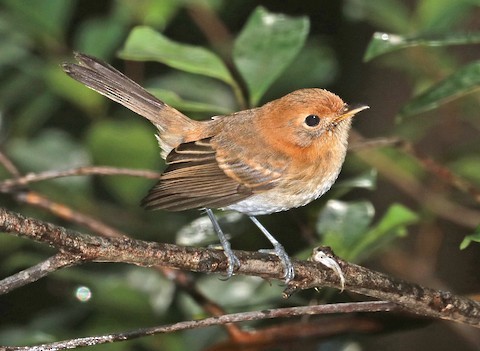
Oahu Elepaio, immature with mostly pale rusty plumage. (Aiea Ridge, Oahu, Hawaii; September 20, 2017.) © Alan Schmierer
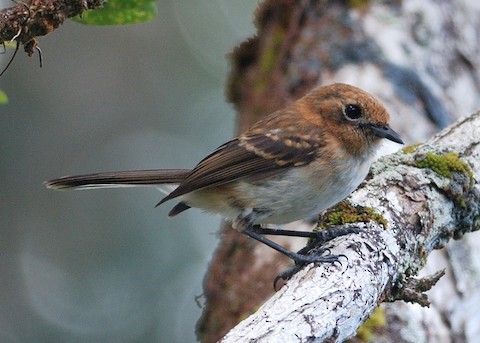
Oahu Elepaio, immature. (Aiea Ridge, Oahu, Hawaii; April 14, 2016.) © Dave DeReamus
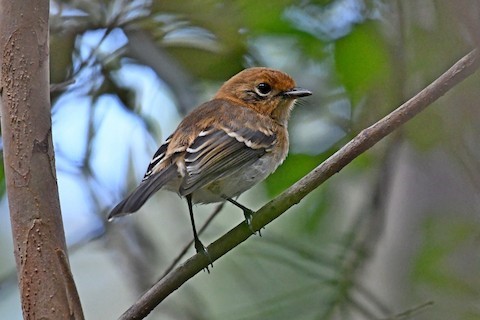
Oahu Elepaio, immature with its tail held down, showing the lack of a contrasting white rump. (Aiea Ridge, Oahu, Hawaii; August 31, 2018.) © Barry Blust
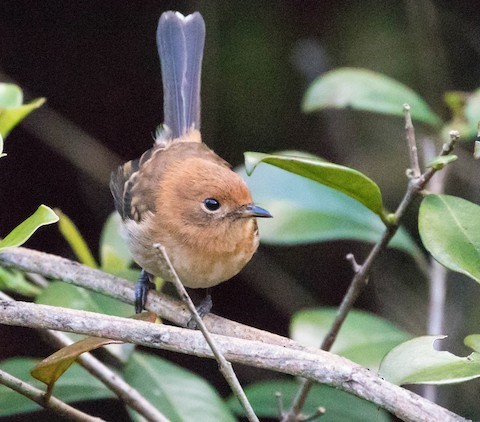
Oahu Elepaio, immature with mostly pale-cinnamon plumage. (Aiea Ridge, Oahu, Hawaii; January 23, 2017.) © Mel Senac
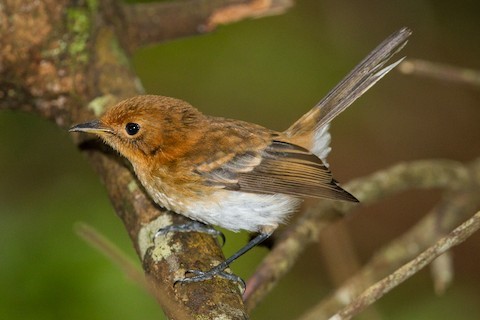
Oahu Elepaio, immature showing typically rusty plumage. (Wiliwilinui Ridge Trail, Oahu, Hawaii; September 5, 2014.) © Eric VanderWerf
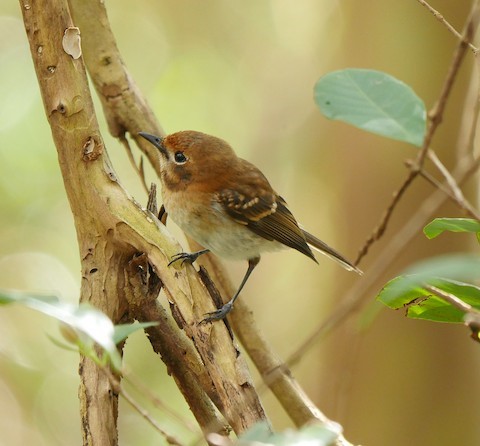
Oahu Elepaio, subadult molting into adult plumage. (Wailupe Valley, Oahu, Hawaii; January 25, 2020.) © Nick Kalodimos
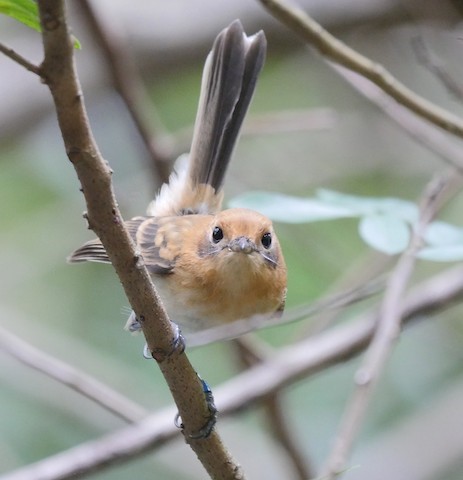
Oahu Elepaio, immature with generally pale rusty plumage. (Wailupe Valley, Oahu, Hawaii; September 29, 2019.) © Nick Kalodimos
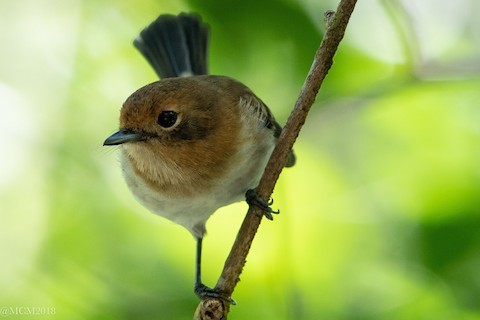
Oahu Elepaio, immature showing an unusually well-defined border between its rusty throat and bib and white breast. (Aiea Ridge, Oahu, Hawaii; August 15, 2018.) © Mary Catherine Miguez

Oahu Elepaio, immature showing exceedingly rusty plumage. (Wailupe Valley, Oahu, Hawaii; August 31, 2019.) © Nick Kalodimos
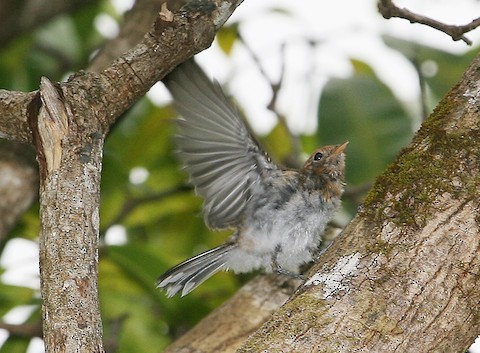
Oahu Elepaio, recently fledged. (Aiea Ridge, Oahu, Hawaii; May 27, 2009.) © Michael Walther

Oahu Elepaio, recently fledged juvenile. (Aiea Ridge, Oahu, Hawaii; May 27, 2009.) © Michael Walther
References
BirdLife International. 2016. Chasiempis ibidis. The IUCN Red List of Threatened Species 2016: e.T22736423A95133622. https://dx.doi.org/10.2305/IUCN.UK.2016-3.RLTS.T22736423A95133622.en. (Accessed May 11, 2020.)
del Hoyo, J., N. Collar, and J.S. Marks. 2020. Oahu Elepaio (Chasiempis ibidis). In Handbook of the Birds of the World Alive (J. del Hoyo, A. Elliott, J. Sargatal, D.A. Christie, and E. de Juana, eds.). Lynx Edicions, Barcelona. https://www.hbw.com/node/1343827. (Accessed May 10, 2020.)
eBird. 2020. eBird: An online database of bird distribution and abundance. Cornell Lab of Ornithology, Ithaca, N.Y. http://www.ebird.org. (Accessed May 11, 2020.)
Pyle, R.L., and P. Pyle. 2017. The Birds of the Hawaiian Islands: Occurrence, History, Distribution, and Status. Version 2 (January 1, 2017). http://hbs.bishopmuseum.org/birds/rlp-monograph/. B.P. Bishop Museum, Honolulu, Hawaii.
VanderWerf, E.A., L.C. Young, N.W. Yeung, and D.B. Carlon. 2010. Stepping stone speciation in Hawaii’s flycatchers: Molecular divergence supports new island endemics within the Elepaio. Conservation Genetics 11:1283-1298.
VanderWerf, E.A., M.T. Lohr, A.J. Titmus, P.E. Taylor, and M.D. Burt. 2013. Current distribution and abundance of the O’ahu ‘Elepaio (Chasiempis ibidis). Wilson Journal of Ornithology 125:600-608.
Xeno-Canto. 2020. Oahu Elepaio – Chasiempis ibidis. https://www.xeno-canto.org/species/Chasiempis-ibidis. (Accessed May 11, 2020.)

